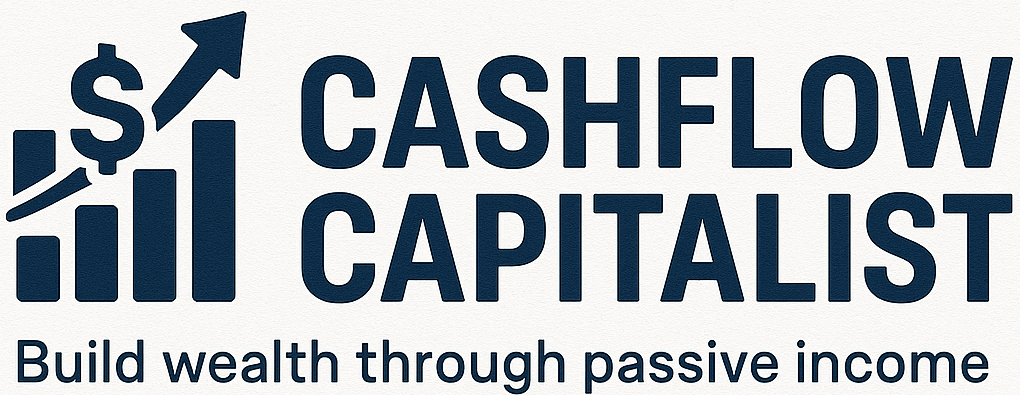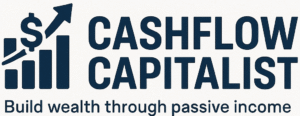HVOI ETF Review 2025: Is the Harvest Low Volatility Canadian Income ETF the Best Monthly Payer on th
Investors looking for steady monthly income might like the Harvest Low Volatility Canadian Income ETF. It mixes dividend-paying Canadian stocks with covered call strategies. This mix aims to balance income, stability, and growth.

The Harvest Low Volatility Canadian Income ETF aims to make monthly income. It focuses on low-volatility Canadian stocks. Covered calls help increase income while keeping risk low.
In this review, we’ll look at the ETF’s performance, dividend yield, and risk. We’ll see if it’s one of the best monthly income ETFs in Canada.
Key Takeaways
- The Harvest Low Volatility Canadian Income ETF offers a unique investment strategy combining dividend-paying stocks with covered calls.
- It is designed to provide monthly income with reduced volatility.
- The ETF’s performance and dividend yield are critical factors in evaluating its effectiveness.
- Investors should consider the ETF’s risk profile when making investment decisions.
- The ETF may be suitable for investors seeking regular income with managed risk.
What is the HVOI ETF?
The Harvest Low Volatility Canadian Income ETF, or HVOI ETF, is a special investment fund. It uses a low-volatility and covered call strategy to give investors stable monthly income. It focuses on Canadian stocks and aims to offer steady returns.
Fund Overview and Investment Objectives
The HVOI ETF is for those who want regular income with less risk. It invests in a mix of Canadian stocks that are known for being less volatile. Its main goal is to give out monthly income, making it great for income-focused investors.
Key investment objectives include:
- Generating monthly income through dividends and covered call premiums
- Reducing portfolio volatility through the selection of low-volatility equities
- Providing a stable source of returns in varying market conditions
Low-Volatility and Covered Call Strategy
The HVOI ETF uses a covered call strategy to boost income. It sells call options on the stocks it holds, and the money from these sales goes to investors each month. This strategy, combined with focusing on low-volatility stocks, makes the ETF more stable during market drops.

The combination of these strategies makes the HVOI ETF a good choice for those looking for stable income. It’s more stable than other products that don’t use these risk management techniques.
HVOI ETF Performance Analysis
The HVOI ETF has shown steady returns and income. Its low-volatility strategy helps it offer consistent monthly distributions.
Historical Returns and Growth Trends
The HVOI ETF has grown steadily over the years. Its net asset value (NAV) has increased significantly. This growth provides investors with a reliable income source.
| Year | NAV Growth | Return |
|---|---|---|
| 2020 | 10.2% | 5.5% |
| 2021 | 8.5% | 4.2% |
| 2022 | 12.1% | 6.1% |
Monthly Distribution History and Yield
The HVOI ETF has a history of consistent monthly distributions. This makes it appealing to investors looking for income. The ETF’s dividend yield has stayed stable, providing a steady income stream.

Volatility Metrics and Downside Protection
The HVOI ETF’s low-volatility strategy protects against market downturns. Its beta and standard deviation show it has a lower risk profile than other Canadian income ETFs.
Key volatility metrics: Beta: 0.8, Standard Deviation: 8.2%
Inside the HVOI ETF: Portfolio Composition
The Harvest Low Volatility Canadian Income ETF (HVOI) focuses on Canadian stocks with low volatility. This strategy aims to offer a steady income while keeping risk low.
Top Holdings and Selection Criteria
The HVOI ETF picks its top holdings for their income and low volatility. It usually includes well-known Canadian companies known for their dividend payments.
- Dividend yield: Stocks with a history of paying consistent dividends are preferred.
- Low volatility: The ETF focuses on stocks that have shown lower volatility compared to the broader market.
- Financial health: Companies with strong financials and a stable outlook are given priority.

Sector Allocation and Diversification Strategy
The HVOI ETF spreads its investments across different sectors to reduce risk. Its sector allocation aims to keep the portfolio balanced and avoid heavy reliance on one sector.
The sectors include financial services, energy, and consumer staples. This diversification helps lower the portfolio’s overall volatility.
Management Expense Ratio (MER) and Fee Structure
The HVOI ETF has a competitive MER, which is key for income investors. It ensures they keep more of their returns. The ETF’s fee structure is clear and affordable.
MER: The MER for HVOI is competitive among Canadian income ETFs. This means investors get to keep a bigger share of their earnings.
HVOI ETF Review: Advantages and Limitations
The HVOI ETF is a great choice for those looking for steady income. It’s known for balancing income and risk well.
Key Strengths for Income Investors
The HVOI ETF has many good points for income seekers. These include:
- Consistent Monthly Income: It offers regular income, making it a dependable choice.
- Low-Volatility Strategy: It focuses on stable stocks to lower market risk.
- Covered Call Strategy: This strategy boosts income and helps during market drops.

These benefits make the HVOI ETF a solid pick for stable income and managed risk.
Potential Drawbacks to Consider
Despite its benefits, the HVOI ETF has some downsides:
- Limited Growth: Its focus on income and stability might mean less growth than riskier options.
- Sensitivity to Interest Rates: Changes in interest rates could affect its appeal compared to other income funds.
- Management Fees: Fees can reduce the returns investors get.
Knowing these drawbacks helps investors decide if the HVOI ETF fits their goals and risk level.
HVOI for Different Investment Accounts
The HVOI ETF is flexible and appealing to various investors. It’s important to think about your financial goals and tax situation when deciding where to place it.
Suitability for TFSA Investors
TFSA investors might find the HVOI ETF very attractive. It offers monthly distributions that can be reinvested or used as income without taxes. This is great for TFSA investors looking for steady income. For more on TFSAs versus RRSPs, check out our guide on TFSA vs RRSP.
Benefits in RRSP Portfolios
In RRSPs, the HVOI ETF provides a steady income stream while delaying taxes until you withdraw. This is good for retirement savings, as it can increase your returns. Its low-volatility approach also fits well with RRSP’s long-term goals.
Taxable Account Considerations
For those with the HVOI ETF in taxable accounts, tax implications of the distributions are key. The ETF’s monthly payouts are taxable and must be reported on your tax return. It’s important to balance the ETF’s benefits with the tax costs.
| Account Type | Key Benefits | Tax Considerations |
|---|---|---|
| TFSA | Tax-free distributions, regular income | No tax implications |
| RRSP | Tax-deferred growth, stable income | Taxes deferred until withdrawal |
| Taxable Account | Regular income, diversification | Distributions are taxable |

Competitive Analysis: HVOI vs. Other Canadian Income ETFs
When we look at HVOI against other top Canadian income ETFs, we see clear differences. This review will compare HVOI with ZWC, CDZ, and ZDV.
HVOI vs. ZWC
HVOI and ZWC both use covered calls to earn income. But, they invest in different ways. HVOI picks low-volatility Canadian stocks, while ZWC follows a wider Canadian dividend index. HVOI’s focus on low volatility might attract cautious investors.
HVOI vs. CDZ
CDZ tracks a dividend-focused index, focusing on companies with a steady dividend history. HVOI, on the other hand, chooses low-volatility stocks and uses covered calls for more income. CDZ might be better for those wanting just dividend income.
HVOI vs. ZDV
ZDV targets dividend stocks known for their stability. Both HVOI and ZDV aim for income, but HVOI’s covered call strategy can lead to higher monthly payouts. Here’s a quick comparison:
| ETF | Investment Focus | Strategy |
|---|---|---|
| HVOI | Low-volatility Canadian stocks | Covered Call |
| ZWC | Canadian dividend index | Covered Call |
| CDZ | Dividend aristocrats | Index Tracking |
| ZDV | Dividend-paying stocks | Index Tracking |
In summary, HVOI stands out among Canadian income ETFs with its mix of low-volatility stocks and covered calls. Investors should think about their financial goals and how much risk they can handle when picking among these ETFs.
Conclusion: Is HVOI the Right Monthly Income ETF for You?
The Harvest Low Volatility Canadian Income ETF (HVOI) is a great choice for those looking for regular income. It uses a smart strategy to balance income and risk. This makes it stand out in the market.
Before jumping into HVOI, it’s good to know its pros and cons. It offers steady monthly income and keeps your investment stable. But, it can be affected by market changes and fees can eat into your earnings.
Thinking about HVOI? Look at your financial goals and how much risk you can take. If you want steady income with less risk, HVOI might be for you. But, it’s key to check if it fits your investment plan.
In short, HVOI is a solid pick for income and stability. But, always do your homework and match it with your financial goals. This way, you can make a smart choice.
FAQ
What is the HVOI ETF and how does it work?
The HVOI ETF is an exchange-traded fund that focuses on Canadian stocks with low volatility. It uses a covered call strategy to earn income for investors every month.
What are the investment objectives of the HVOI ETF?
The HVOI ETF aims to provide a steady monthly income. It does this by investing in a variety of Canadian stocks. This helps to keep volatility low.
How does the HVOI ETF’s covered call strategy work?
The ETF sells call options on its stocks to earn extra income. This income is then given to investors monthly.
What is the historical performance of the HVOI ETF?
The HVOI ETF has shown stable performance over time. It has consistently given investors monthly income while keeping volatility low.
How does the HVOI ETF compare to other Canadian income ETFs?
The HVOI ETF is compared to other Canadian income ETFs like ZWC, CDZ, and ZDV. This comparison helps investors understand its strengths and weaknesses.
Is the HVOI ETF suitable for TFSA investors?
Yes, the HVOI ETF is good for TFSA investors. It offers a steady monthly income and is tax-free.
What are the tax implications of investing in the HVOI ETF?
Investors should think about the tax implications of the HVOI ETF. This includes dividend income and capital gains, which can affect taxes.
What is the management expense ratio (MER) of the HVOI ETF?
The MER of the HVOI ETF is important for investors. It affects the cost of investing and the fund’s returns.
How does the HVOI ETF’s low-volatility approach benefit investors?
The ETF’s low-volatility approach helps reduce risk. It provides stable income, making it attractive for those seeking predictable returns.
What are the possible drawbacks of investing in the HVOI ETF?
There are drawbacks to investing in the HVOI ETF. One is the reduced upside during strong market growth periods.




